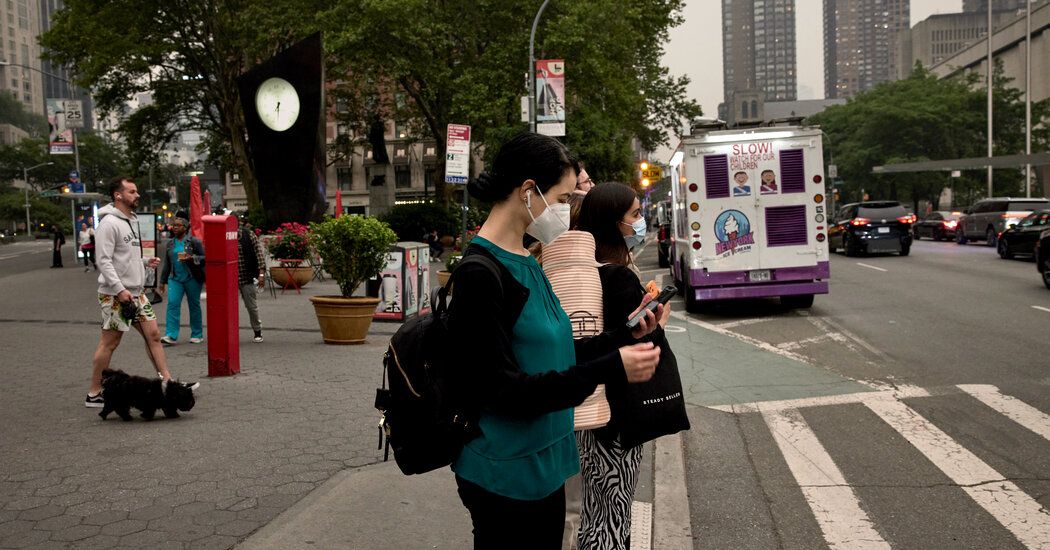How to Stay Safe From Wildfire Smoke If You’re High Risk
As wildfire smoke blankets large swaths of the eastern United States, many people are experiencing physical symptoms, like prickling, stinging eyes; a scratchy throat; a runny nose; and some coughing. For those without underlying conditions, this will largely be a passing source of irritation. “You’ll be miserable a little bit, but you’ll be able to brush it off,” said Dr. Panagis Galiatsatos, a pulmonary and critical care medicine physician at Johns Hopkins Medicine.
But for those who are most vulnerable, even brief exposures can have immediate ramifications, as exposure to toxins in the smoke can trigger inflammation and exacerbate existing health issues. This group includes children and adults with respiratory or cardiovascular conditions. “For vulnerable populations, the brevity of exposure may be enough to flare up underlying lung issues, or conditions overall,” Dr. Galiatsatos said. Babies, young children, older adults and pregnant women are also at higher risk of serious health effects.
Everyone may want to take precautions, but doing so is particularly critical if you are vulnerable. Here’s what health experts advise to minimize your risk:
Monitor air quality.
“Don’t let your eyes be the sole deciding factor” to determine the air quality, Dr. Galiatsatos said. Monitor the local Air Quality Index, which can be found at AirNow.gov.
If the air quality is poor, stay inside as much as you can, said Dr. Samantha Green, a family physician at Unity Health Toronto. If the air quality is moderate and you have underlying conditions, you may want to continue to take precautions and minimize your time outside. Air Quality Index values above 100 mean that the air is unhealthy, and values between 51 and 100 are considered moderate.
Source: The New York Times


